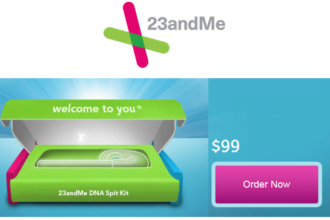 Last week the Government Accountability Office (GAO) released a report for Congressional Committees titled, “HHS Strategy to Address Information Exchange Challenges Lacks Specific Prioritized Actions and Milestones.”
Last week the Government Accountability Office (GAO) released a report for Congressional Committees titled, “HHS Strategy to Address Information Exchange Challenges Lacks Specific Prioritized Actions and Milestones.”
 Last week the Government Accountability Office (GAO) released a report for Congressional Committees titled, “HHS Strategy to Address Information Exchange Challenges Lacks Specific Prioritized Actions and Milestones.”
Last week the Government Accountability Office (GAO) released a report for Congressional Committees titled, “HHS Strategy to Address Information Exchange Challenges Lacks Specific Prioritized Actions and Milestones.”
The 44-page report highlights for Congress some of the known problems that exist for many HIE organizations: standards, privacy, patient matching, and costs. The standards challenges portion of the GAO report listed five different issues respondents identified as areas of concern.
Issue 1: “HHS officials told us that the extent to which the standards will lead to widespread improvements in electronic health information exchange will remain unclear until a larger number of providers begin using technology that is certified to the standards.” (CCD and Direct Project are the standards the statement references.)
Issue 2. Providers voiced concerns that CCD/Direct standards are too narrow. They want data standards that make all EHR data interoperable and more advanced communication methods to choose from other than Direct.
Issue 3. CCD doesn’t include the ability to exchange more detailed clinical info, such as patient narratives.
Issue 4. Standards regarding allergies are insufficient.
Issue 5. Direct allows for limited exchange, such as exchanging a secure email.
These HIE issues are well known and documented for those in health IT, but Congress’ only exposure to the challenges of health data interoperability was likely provided by The Daily Show’s segment (starting at the 4:30 mark) on the government’s two EHR systems, AHLTA and VistA. So it’s reasonable that a GAO overview of general HIE challenges is due. After all, Congress did approve the funds that led to the creation of a majority of state HIE organizations.
I had two general impressions about the standards complaints discussed in the report section.
First, the report spends a great deal of space focusing squarely on the EHR applications, stating that many do not use standards that make data exchange possible, or at least easier. The report states that a majority these complaints have been addressed and likely will see resolution in the future now that all providers will soon be using a 2014-certified EHR, which includes defined standards CCD (data) and Direct Project (transport/communication), if they plan to attest for Meaningful Use.
But what about the HIE organizations? Are they also ready to use standards designated in Meaningful Use?
Just last month, we released a HIMSS Analytics report on health data interoperability that told the story of a provider unable to send CCD documents to their state HIE organization because it is not yet able to accept them. The CIO said, “The state cannot do anything with this information, yet it’s a requirement of meaningful use that we exchange them. …Instead of buying an MRI, we are going to have to spend money on something that is not going to be used because we have to check off a box [under meaningful use criteria.]”
So, there are ONC-funded state HIEs that do not use ONC-mandated health data exchange standards.* Is it unreasonable to think that the ONC’s HIE initiative and the standards it defined for data exchange in Meaningful Use be aligned?
Second thought, respondents in the report place too much emphasis on the ONC’s guidance for interoperability. The report paints providers as completely dependent on the government for direction.
Meaningful use criteria are indeed shaping the industry and modernizing how health data is used, but the criteria isn’t a paint-by-numbers instruction manual. IT departments should not feel reliant on or handcuffed by the ONC. There is still plenty of room for IT leaders to set ambitious, innovative goals that help create a competitive advantage through data exchange. This is technology after all.
Direct Project, for example, is the “minimum threshold” for data exchange and is appealing because of its ease of use and accessibility for providers of all sizes, not because it is the most interoperable method of data exchange.
There is still plenty of room for innovation in Meaningful Use. We frequently hear from providers who are successfully using query-based web services for highly interoperable data exchange outside the four walls of their organization. IHE integration profiles have been defined for SOAP-based data exchange. As John Moehrke said, providers can “Go simple with Direct, or add value with other IHE Document Sharing Profiles. The good news is that security is already baked in.”
Healthcare providers are working diligently to incorporate interoperability solutions for their business operations, both internally and externally, and also are making strides to attest for Meaningful Use. Providers, for the most part, have the means ($) and the motivation to make a more interoperable health system, so odds are good that they will meet their goals.
HIE organizations, on the other hand, do not have the same advantages. Government grants helped HIEs get started and establish the needed IT architecture for exchange, but the complexity of CCD and CDA (HL7 v3) are real hurdles. The lack of trained staff and available budget make it very difficult to align the multiple stakeholders that are needed for future financial sustainability. It will be interesting to see how the HIE marketplace unfolds.
*The ONC’s State Health Information Exchange Cooperative Agreement Program has provided funding for 56 states, eligible territories, and qualified State Designated Entities since March 2010.
* While the GAO report mentions CCD, Meaningful Use Stage 2 requirements designated the Summary of Care Consolidated CDA as a requirement for exchange of patient data. CCD is part of the Consolidated CDA family of documents.
(GAO report / shutterstock)









